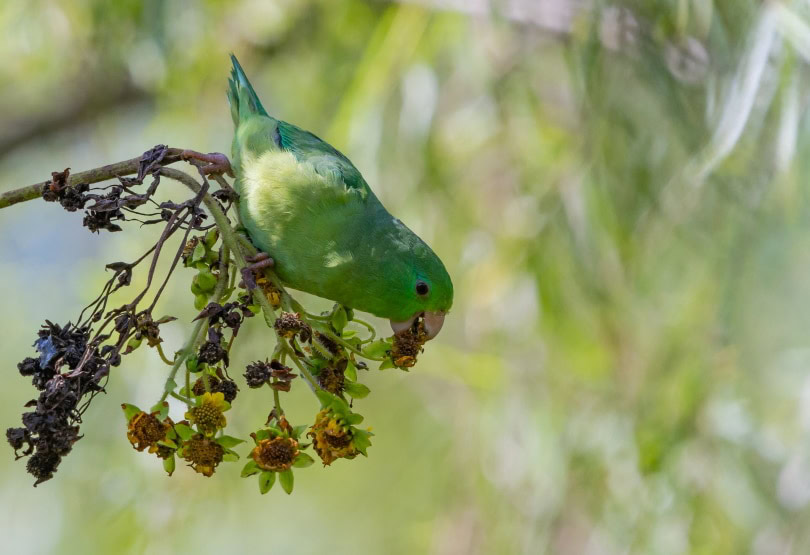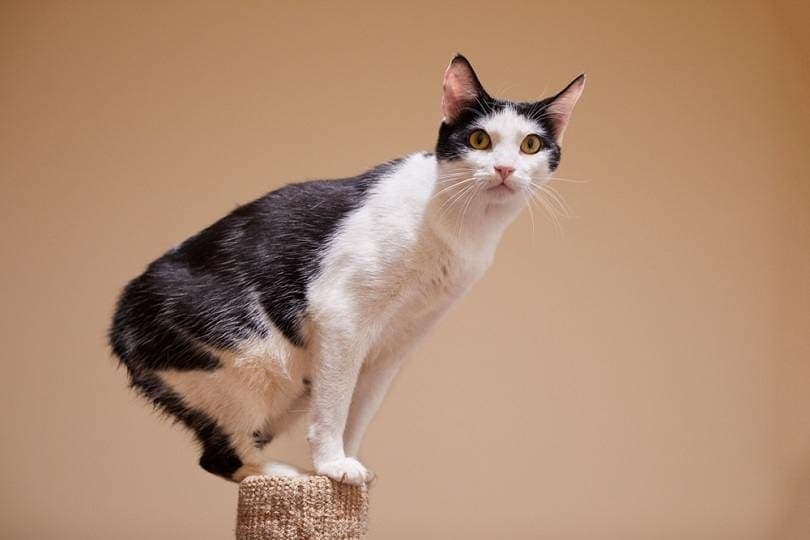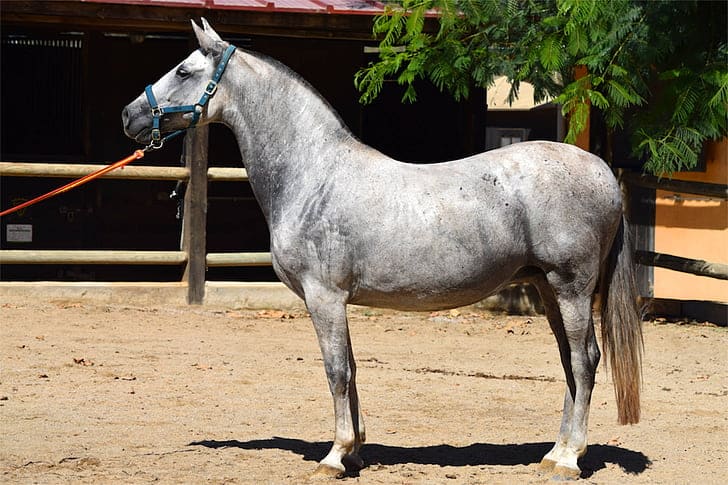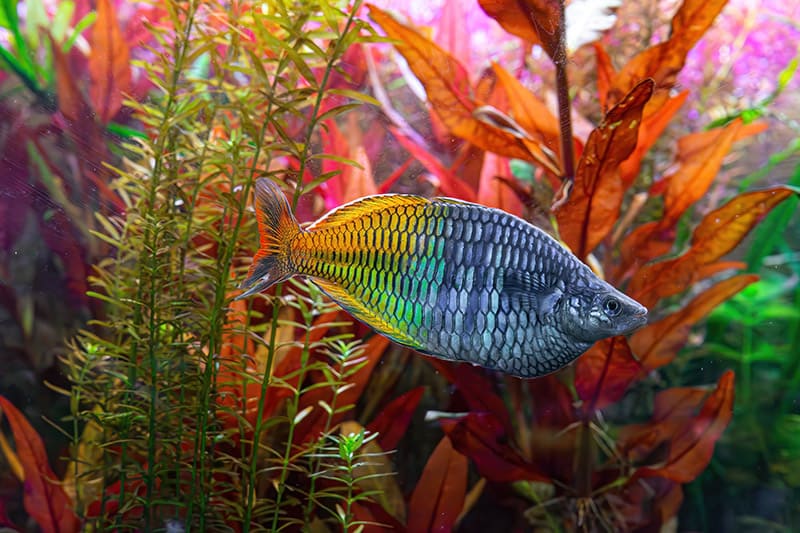If you’re looking for a pet bird, you’re probably mulling over your options. You might have come across the adorable little parrotlet. These compact cuties have so much to offer potential owners, so they’re worth checking out.
If you don’t have the room in your house for a giant cage, then this mini bird might very well be your best bet. So, what options do you have? Surprisingly, there are tons of parrotlets around. Let’s take a look at 10 of the most common parrotlets you can own.

Parrotlet Overview
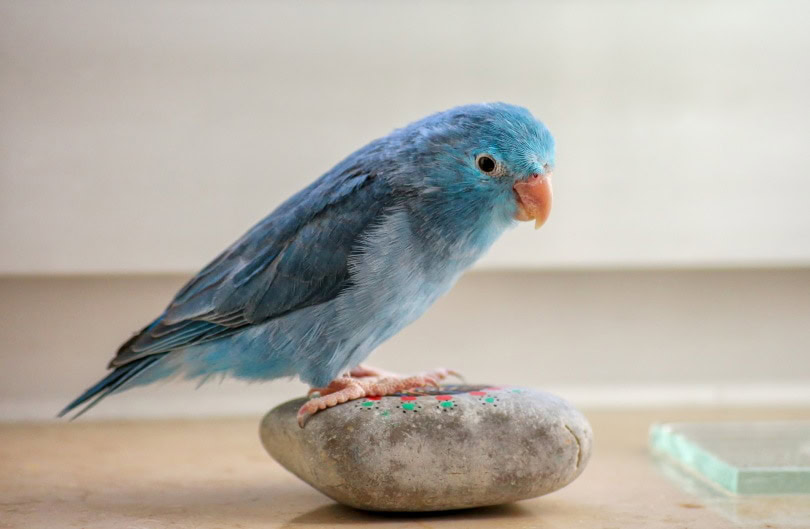
| Scientific Name | Forpus coelestis |
| Lifespan | 15 to 20 years |
| Diet | Herbivore |
| Enclosure Size | 18” x 18” |
Parrotlets are spirited birds with fiery personalities. They capture the hearts of owners with their humorous actions and spunky antics. They do well as solo birds, but they absolutely adore being with their own kind as well.
Many hobbyists adore parrotlets because they are very tiny and quiet, unlike many other larger parrots. This makes them great candidates for apartment living—or for those who simply prefer a quieter household. Also, if you don’t have ample space for a large enclosure, they take up little space.
Parrotlets can be a little bit fussy about attention. You want to make sure that you handle them frequently. If you fail to socialize them properly, they can (and will) show aggression.
Parrotlets tend to gravitate towards one human that they form a relationship with. However, that doesn’t mean that they won’t be somewhat friendly with people in the household—or even strangers. Parrotlets thrive on attention and love to be in on the action.
While parrotlet personalities are similar, there are tons of patterns and colors to choose from. Each parrotlet comes from a different place on the map, but all of them are tropical birds. Let’s take a look at 10 of the most common parrotlet pets you can find.

The 10 Parrotlet Species That Make Great Pets:
1. Pacific Parrotlet
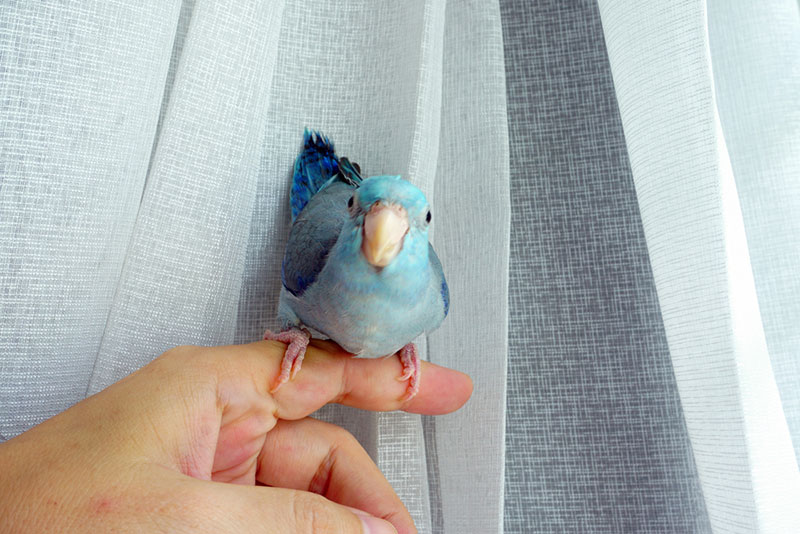
| Price: | $250 to $350 |
| Rarity: | Common |
The Pacific parrotlet is one of the most common parrotlets you can find. They are often used in breeding to create lots of exciting mutations—and they sport quite interesting looks themselves. Most Pacifics are green, but they can take on yellow and blue colors, too.
2. Green-Rumped Parrotlet
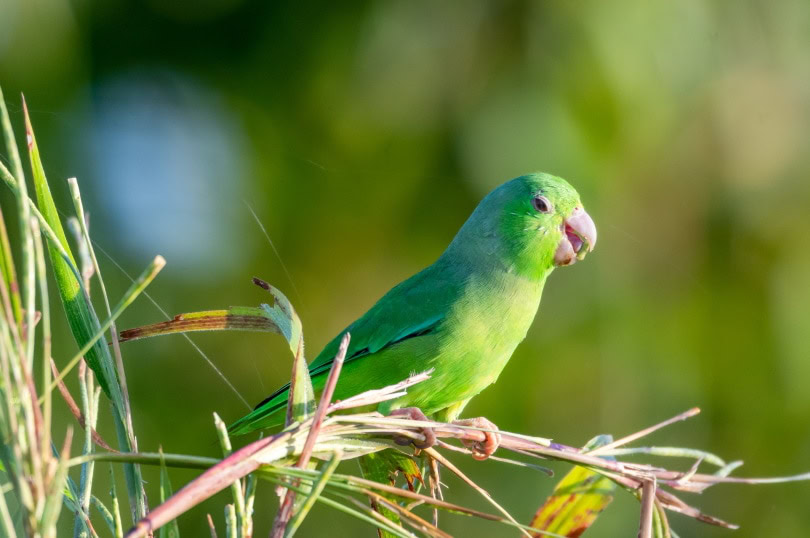
| Price: | $150 to $600 |
| Rarity: | Common |
The green-rumped parrotlet includes four types: the Colombian, Riohacha, Trinidad, and Venezuelan parrotlet. These parrots look much like their Pacific parrotlet cousins, but the green hues are usually richer with beaks of peach to pink. This group of parrotlets carries the same physical characteristics.
3. Blue Pastel Parrotlet
| Price: | $300 to $500 |
| Rarity: | Moderately common |
The blue pastel parrotlet is a mutation that carries breathtaking aqua hues, collaborating in a medley of color. These guys range quite a bit in looks, as some of them can even sport lime-green patches. On the contrary, they can also be quite diluted with softer powdery blues.
4. Spectacled Parrotlet
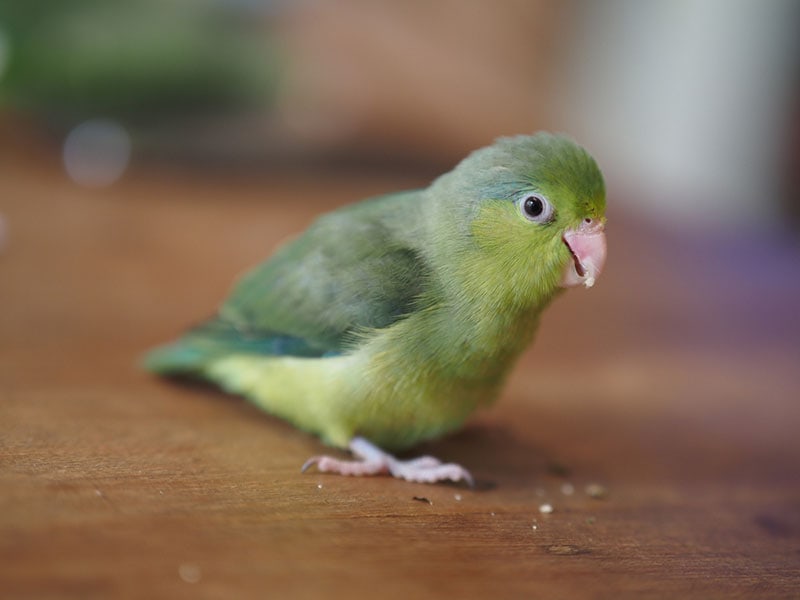
| Price: | $500+ |
| Rarity: | Common |
Originally from Colombia, the spectacled parrotlet is another dimorphic parrotlet species. The males are darker-toned green than their lighter female counterparts. However, both sexes have a less vibrant color than many other parrotlets, focusing on neutral greens.
5. Yellow-Faced Parrotlet
| Price: | $300 to $500 |
| Rarity: | Common |
As the name implies, the yellow-faced parrotlet has a sunshine smile, touting a lemonade-like face and chest coloring. When these birds perch, their backside is a matte gray. However, when they spread their wings, impressive cobalt blue and green feathering appear.
6. Mexican Parrotlet
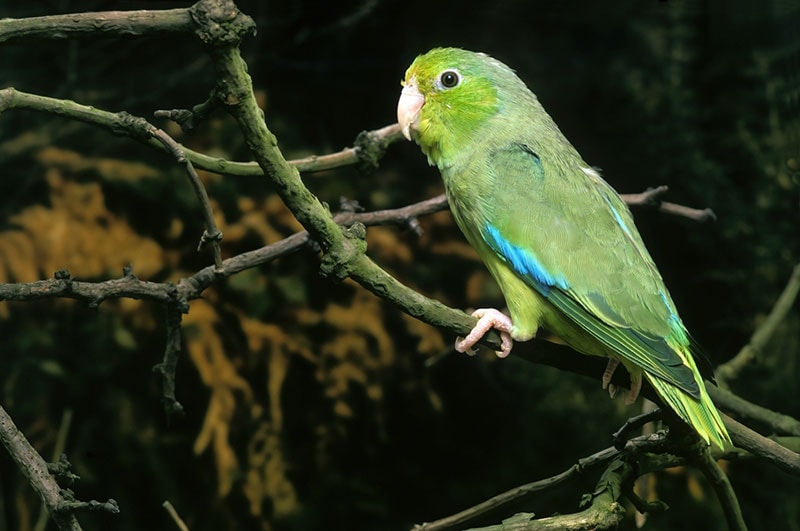
| Price: | $325 to $500 |
| Rarity: | Common |
Mexican parrotlets are visually pleasing, touting bright green feathering. On the rump and wings, you can find lovely turquoise blue markings. Because they are plentiful and prime for breeding, they make quite interesting mutations.
7. Lutino Parrotlet
| Price: | $300 to $550 |
| Rarity: | Somewhat common |
The lutino parrotlet is a very vibrant character. These guys have lovely colors ranging from electric yellow to lime green. Their distinct coloration makes them quite attractive candidates for breeding since it’s possible to create so many excellent colors.
8. Albino Parrotlet
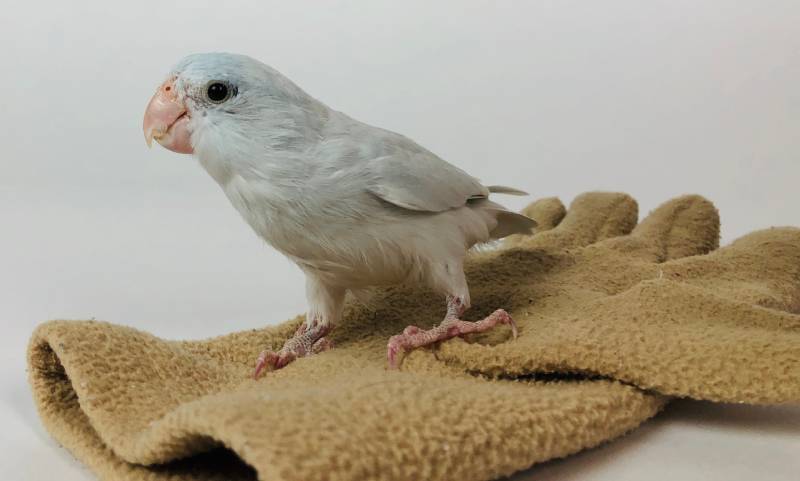
| Price: | $325 to $475 |
| Rarity: | Rare |
The albino parrotlet is entirely white with glowing red eyes. These rare beauties are a mutation achieved from breeding blue splits and lutinos. Unlike many other parrotlets, albinos look the same regardless of if they are male or female.
9. Pied Parrotlet
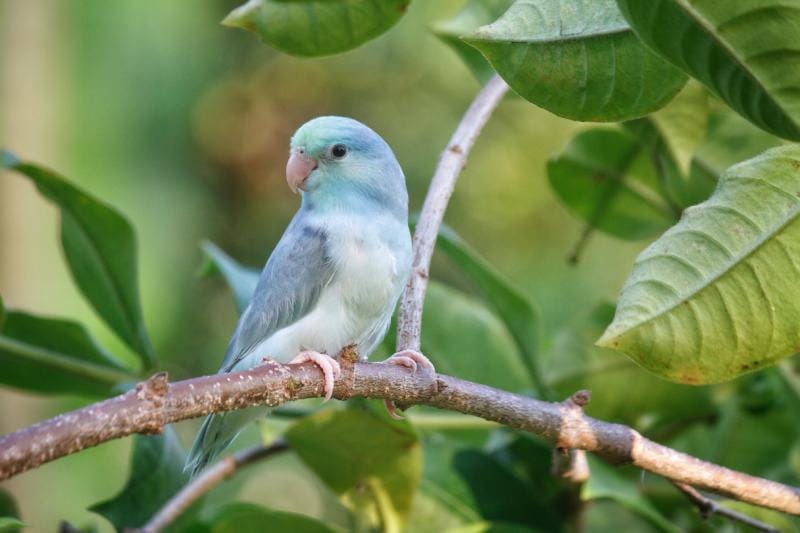
| Price: | $450 to $500 |
| Rarity: | Extremely rare |
The pied parrotlet is probably the rarest one on our list. It is absolutely gorgeous, looking like a multi-colored surprise. These birds have interchanging patches of white, turquoise, aqua, blue, gray, and all sorts of greens. They are a mutation, combining several parrotlet types for a tie-dye finish.
10. Sclater’s Parrotlet
| Price: | $100 to $350 |
| Rarity: | Moderately common |
The Sclater’s parrotlet, otherwise known as the dusky-billed parrotlet, is a bright green cutie. These birds have an adorable dark bill, making them stand out over their other green cousins. Their feathering is also more muddied than other more tropical-looking parrotlets.


Final Thoughts
This is not an exhaustive list of parrotlets by a long shot. There are so many different kinds of mutations that just keep growing every day. Breeders work diligently to create favorable personalities as well as incredible color structures.
Which one of these gorgeous little birds caught your eye?
Featured Image Credit: Arcadio Marin, Shutterstock
